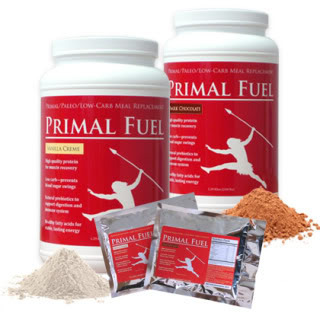Mark Sisson's Blog, page 369
September 22, 2012
Contest: Bacon Bonanza
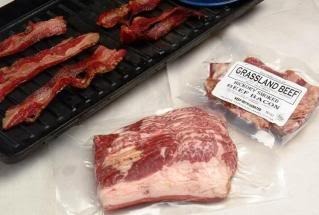
The Prize:
A Bacon Bonanza prize package from U.S. Wellness which is comprised of all this bacony goodness:
Beef Bacon
Sugar Free Beef Bacon
Beef Bacon Tips
Sugar Free Beef Bacon Tips
Pork Bacon
Sugar Free Pork Bacon
Pork Bacon Ends
Sugar Free Pork Bacon Ends



The Contest:
Today’s contest is so easy a caveman could… it’s super easy. Visit U.S. Wellness here and sign up for their newsletter. In addition to special discounts, meaty recipes and updates on this family farm, you’ll be entered to win the Bacon Bonanza prize above.
While there can only be one Bacon Bonanza winner, you can still acquire some of your own by visting U.S. Wellness online. And don’t forget to check out U.S. Wellness on Facebook and YouTube. Grok on!
Eligibility:
Only U.S. residents are eligible.
The Contest End Time:
September 28, midnight, PDT.
How the Winner Will Be Determined:
A winner will be chosen at random from those that subscribe during this contest period, and emailed to arrange for delivery.
To track all the contests visit the 2012 Primal Blueprint 21-Day Challenge Contest Page for daily updates.
Subscribe to the Mark’s Daily Apple Newsletter for Free eBooks, Weekly Challenge Updates and More!

September 21, 2012
From Sugar-Burner to Fat-Burner: A Transformation Story
It’s Friday, everyone! And that means another Primal Blueprint Real Life Story from a Mark’s Daily Apple reader. If you have your own success story and would like to share it with me and the Mark’s Daily Apple community please contact me here. I’ll continue to publish these each Friday as long as they keep coming in. Thank you for reading!
 Mark,
Mark,
As a chiropractor, I thought I’d been taught everything I needed to know about nutrition. The “studies” prove it, right? Whole grains are king, aren’t they? My vegan nutrition professor who was so incredibly thin couldn’t be wrong. I have a strong background in nutrition, yet as I aged, I felt crappier every year.
After my doctorate program was over, I was left with the gifts of bad eating habits: “healthy” carb-up and caffeine-up through exams, regular sickness, chronic fatigue, migraines and mental fog that made working out like I used to almost impossible. It was a worse version of what I remember feeling as a teenager on the tennis court. Horrible low blood sugar after the first set, poor focus, SUGAR BURNER! Yikes! And I had a doctor for a dad who I still argue with over the new rules that you promote. (His belly and visceral fat has been an issue since he was 40 on his Mediterranean diet).
Something had happened to me in my late twenties. I even went raw vegan for a few months to try and fix it to no effect. I felt lighter and clearer, right before I got worse. After years of worsening symptoms and the introduction of GERD to that list for the first time in my life, I started doing my own research.
The short version is, I had no clue about Primal living, so I conducted my own extensive and unbiased nutritional research. Everything seemed to point to carbohydrate and grain as a significant problem in our culture. (Besides processed foods in general, I have major MSG sensitivity.) The big pill to swallow was the wrongful demonization of fat. But every time I tried to find causal evidence, not just correlative evidence, it didn’t exist. Once I saw the truth, I changed my diet. I lost 23 pounds in two months while adding no fitness of any kind, but for occasional walking with my wife. The results were, in all honesty, so fast to make me giggle hysterically on the scale when I weighed in. My personal experiment was also tracked via blood work. Then, I kept digging and found your book among the rest of the pack once I realized that many others already knew this incredible way of doing things. I personally believe, based on the evidence I’ve seen, your specific approach appears to be the best when examining the entire “paleo” trend as a whole. Your early focus on emphasizing fats is way ahead of its time. Fat can only clog arteries if you have inflammation, and grains and excess glucose are the cause of that for sure. And we are now just scratching the surface on how important a cholesterol of at least 200 is in combating stroke and improving immunity. Also, I probably went too low on the carbs, maxing out at no more than 50 g a day and I now weigh around 190. I think your charts are accurate.
 Needless to say, I feel 18 again, never ever have headaches, fatigue, or stomach issues. I haven’t been physically sick at all since switching over, possibly due to the immune benefits of HDL and LDL cholesterol. Some fundamental shift occurred in my body. I don’t even get cold sore viral outbreaks, which were rare, but happened a few times a year. No more.
Needless to say, I feel 18 again, never ever have headaches, fatigue, or stomach issues. I haven’t been physically sick at all since switching over, possibly due to the immune benefits of HDL and LDL cholesterol. Some fundamental shift occurred in my body. I don’t even get cold sore viral outbreaks, which were rare, but happened a few times a year. No more.
Every time I read a new study, I see the connection now to what you teach. And my personal blood work? My Triglycerides are lower than when I was mostly vegetarian. My HDLs went up finally, after not being moveable on any other diet. And most importantly, I am now a FAT BURNER. And after about a year of being Primal, I have begun intermittent fasting because it just feels right to my body. I have been a huge fan of reducing calories for life extension, but never tried it seriously because it seemed so impossible as a sugar burner.
I have taken the Leangains approach, something I learned about via your posts. I like the overnight fast through to lunch as I take my lunch at the clinic around 1 pm. I am now attempting to get better definition than I have ever seen. Two months ago I also fell prey to the awesomeness of CrossFit. And thanks to my fat-burning, I often work out fasted, and never lose my energy because I take rest weeks and allow myself time to get stronger. I came back from my last rest week and practically doubled my strength on pull ups.
I prescribe your plan and your book to many patients in my office. I have consistently seen the removal of GERD, all types of IBS symptoms, weight loss, headache removal, blood pressure reduction and more. I might have to start tracking these as case studies in the future.
My biggest personal problem is, I’m on the last loop of my belts I’ve had for ten years, and the new slacks I bought after losing the initial weight are already bunching up around my waist from being too big after just a couple weeks adding in the fasting. I’ve always had what my wife calls “the bagel” at my navel. It is gone. And for the first time, I have a much higher fitness goal than I ever imagined, to get to 10% body fat or maybe lower. So far, it feels easy. I don’t work too hard, I have fun and play and walk, and don’t stress if I need a Haagen-Dazs bar. The occasional indulgences haven’t hurt a bit.
Finally, I can be the optimized example my patients need to help them be their best. Thank you for creating a packaging that appeals to all people and has a laid back, positive approach. Maybe I’ll sit behind you one day at the ancestral health symposium!
Dr. Jason Bussanich
Subscribe to the Mark’s Daily Apple Newsletter for Free eBooks, Weekly Challenge Updates and More!

Special Offer: Try Both Flavors of Primal Fuel – SOLD OUT!
**Update: Sorry Folks, this offer in no longer available. However, you can still check out both flavors of Primal Fuel by visiting PrimalBlueprint.com!**
Instead of a contest today, I have a special offer for MDA readers…
In the two years that Primal Fuel has been available, thousands of people have tried it, and if the daily emails I receive from happy customers are any indication, nearly everyone absolutely loves it. Some prefer the delicious Vanilla Coconut Cream variety, others the decadent Chocolate Coconut. I’m more of a chocolate guy myself, so I have a Primal Fuel chocolate shake regularly for breakfast, when I’m on the road and to satisfy the odd sweet tooth I might get. I’m confident that once you taste Primal Fuel and take a look at the short list of healthy ingredients on the label (nutritious fats from coconut milk, the gold-standard version of whey protein, just enough sugar to be tasty and Primal at the same time, and prebiotics) that you’ll love it, and it will help you get and stay Primal. This is why I’ve put together this special offer. I want MDA readers to have the chance to try it on for size, so for the first 300 people that take advantage of this offer they’ll get a trial serving of both flavors of Primal Fuel for the cost of S&H ($3.00). (One order per household.) If you’ve been wanting to try Primal Fuel for some time now, this is your opportunity to give it a shot. Also, I have a 15-serving Primal Fuel in the pipeline, so stay tuned for that, too. Grok on!
Limited to First 300: Get a Trial Serving of Both Flavors of Primal Fuel for Only the Cost of S&H

September 20, 2012
Action Item #5: Slow Life Down
 Of all the Action Items, #5 can be the hardest or the easiest for people. (Confession time: it’s the one I still work on.) It’s probably the most far-reaching of the AIs, but likely the most fun. In the midst of great Primal fare and Grok approved exercise, there’s the rest of life after all. This Challenge emphasizes genuine transformation, and that means optimizing all the major fronts of life and lifestyle. Overhauling your diet and movement will absolutely reshape your health, but true thriving encompasses a broader, more nuanced sense of well-being. It’s about fulfillment, contentment, and vitality – both physical and mental. Just as the other Action Items guide you to examine and often revamp your daily choices for better health, #5 brings the same scrutiny and strategizing to other aspects of life. The purpose is familiar by now: to let go of practices that don’t serve your well-being and implement those that do.
Of all the Action Items, #5 can be the hardest or the easiest for people. (Confession time: it’s the one I still work on.) It’s probably the most far-reaching of the AIs, but likely the most fun. In the midst of great Primal fare and Grok approved exercise, there’s the rest of life after all. This Challenge emphasizes genuine transformation, and that means optimizing all the major fronts of life and lifestyle. Overhauling your diet and movement will absolutely reshape your health, but true thriving encompasses a broader, more nuanced sense of well-being. It’s about fulfillment, contentment, and vitality – both physical and mental. Just as the other Action Items guide you to examine and often revamp your daily choices for better health, #5 brings the same scrutiny and strategizing to other aspects of life. The purpose is familiar by now: to let go of practices that don’t serve your well-being and implement those that do.
What does it mean to “slow life down”? It means releasing the white knuckle obsession with speed and efficiency, connectivity and complication. It means adopting a rhythm that allows you to cultivate attention and intentionality in your life. We’re better able to be present and enjoy everything from a good meal to a meaningful relationship. We’re more focused on how our body feels during a workout or a meal rather than on what the latest health magazine tells us. Ultimately, slowing down calls us to bring life more in balance with evolutionarily defined patterns. It’s about connecting with those Primal expectations that nudge us toward everything from sleep to simplicity, intimacy to productivity. When we understand our Primal patterns, we’re able to optimize the benefit of modern conveniences and minimize their drawbacks. We’re able to cut out what is simply modern static and feel back in control of how we enjoy our daily life.
Diet
A lot of people come to the Primal Blueprint having tried all kinds of complicated and regimented diets. Meals have been more about counting or weighing than enjoying. For others, eating has long been more of an afterthought in their lifestyle. A meal is an exercise in speed, and convenience has trumped both actual healthfulness and a deeper satiety.
Slowing down your diet means realigning your relationship with food. It’s about getting back in tune with your body’s response to food. It means learning to differentiate between real hunger and the past roller coaster of carb cravings. It’s about recognizing your body’s response to authentically filling, nourishing food. It means enjoying the full experience of a meal and walking away from the table (yes, the table and not desk/kitchen counter/car) fully gratified. Let yourself savor your food again. Rediscover dining as a leisurely indulgence.
What to Do:
Plan and prepare meals that appeal to all your senses.
Eat when you’re genuinely hungry rather than when the clock suggests it’s time for another meal.
Give yourself the time to enjoy cooking. Make it part of your time with friends, a partner, or family.
Take the time to sit and savor each meal. Make eating a fully gratifying experience by setting the table or finding a perfect spot under a tree. Put on some good music. Taste each bite. Enjoy the company of good friends and family.
Further Reading:
You Are How You Eat
Mindful Eating: The Art of Being Present at the Dinner Table
Cooking as a Spectator Sport
Digital
I’m a big fan of the convenience and entertainment modern technology offers. I have my favorite shows, I like my smart phone, and my business these days depends upon the Internet. Nonetheless, I don’t let my life revolve around a digital sun.
With mobile technology, it’s too easy to get caught up in a pellet mentality – obsessively checking email, pulling out the PDA whenever there’s a spare ten seconds. When we buy into hyperconnectivity, we too often disconnect from the reality in front of us. Even when we put the digital device down, we’re distracted thinking about the status update or gloomy news story we just read. The constant state of interrupted thinking becomes addictive to our vigilant hunter-gatherer brains and can leave us feeling jangled and exhausted for no good reason. When this happens, the digital realm isn’t a convenience to us anymore. It’s a burden. Get back in control of your time and energy. Set practical boundaries for your media usage, and situate your mind in the present concrete reality. You’ll enjoy what you’ve been missing.
What to Do:
Set “business hours” for your PDA, and stick to them. Your family will thank you, and you’ll be surprised how much extra time you have without the major time suck in your hand.
Prioritize your media viewing. Choose the social media groups, websites, and shows that you truly enjoy or learn from the most. Then see if you can focus your media time by using a DVR or watching online streaming versions of your favorite shows. Doing so will allow you to be in control of your own schedule and let you skip past or reduce commercial time.
Avoid the overstimulation of screen time before bed and choose something relaxing instead.
Further Reading:
Mired In Media
How the News Impacts Your Health (and What You Can Do about It)
Exercise
So many readers tell me they’ve spent years running themselves into the ground with punishing workouts. Others have gritted their teeth each day going through the motions of a dull, uninvigorating exercise regimen. It’s time to get back in touch with what cultivates genuine vitality.
Learn to listen to your body. What’s your physical condition today? What’s your level of mental energy? How does your body respond to different workout practices or environments across the spectrum of physical and mental vigor? Check in with your body and not just your agenda. Hone your intuition.
What to Do:
Harness the power and motivation behind your natural competitiveness, but don’t let it get the better of you. Value your workout partnerships and personal physical condition above a competitive edge.
As you get ready to exercise, ask yourself what kind of workout will serve your physical or mental well-being that day.
Make time for totally spontaneous workouts when you let your creativity and mood dictate your movement.
Don’t be afraid to lighten or even skip a workout if that’s what you body needs.
Further Reading:
Listening to Your Body
Winging It: Fun, Spontaneity and Intuition in Your Primal Life
Workout Suggestion: Planned Spontaneity
Personal Time
It’s so easy to fill our personal schedules to the brink that alone time is often a five-minute shower in the morning. Nonetheless, we we all benefit from solitude, and some of us (depending on our temperament) require more to bring our best self to the rest of life. There’s real power in knowing yourself and serving your needs despite the guilt trip many of us give ourselves.
Genuine well-being calls us to invest in ourselves. It obliges us to fill the well, to fulfill needs and instincts that go beyond diet and exercise. When we give ourselves time to unplug from our world and everyone in it (as much as we love them all), we can decompress from the duties and stressors that fill our days. We can restore ourselves, bring hormonal and emotional baselines back to a healthy levels, and bring our better natures to whatever the day holds. Have you been living the full measure of your humanity – and individuality? Need a refresher?
What to Do:
Ask yourself what you’ve wanted to do for yourself but haven’t because you have too much going on. Is there an old hobby you want to revisit? Do you miss evening bike rides after dinner? Have you been planning to begin a meditating practice for as long as you can remember? Commit to it today. These things matter.
Ascertain the time wasters in your life (e.g. excess TV, PDA surfing, unnecessary commute time) and trade them for some quality solo ventures.
Set aside (yes, put yourself on your own schedule) no less than 15 minutes a day for pure, unadulterated alone time. Plan for longer breaks or getaways over weekends or vacation time. Consider going for broke and taking a solo retreat.
Further Reading:
The Power of Solitude: Why You Should Spend More Time Alone
The Restorative Power of a Personal Retreat
Total Immersion: Tapping Into the Power of Flow
The Pleasure Principle
20 Ways to Cultivate IE in Your Life
Relationships
The pace and nature of modern life seems to increasingly devalue close relationships. In the age of Facebook, LinkedIn, and every other virtual network, it can feel like quantity trumps quality. At the end of the day, however, who would back you in a fight with a saber-toothed tiger? What would Grok think of your 872 Facebook friend count? Famous anthropologist Robin Dunbar says comparative cultural records indicate we’re designed to maintain an intimate circle of about twelve people (family and close friends) and a larger social circle (e.g. neighbors, coworkers, casual friends, etc.) of approximately sixty (the upper limit on traditional hunter gatherer band size). Let’s just say modern measures don’t always jive with Grok standards.
The heart of this Action Point: be more genuinely present to your nearest and dearest. That doesn’t mean de-friend 812 people tonight, but it does mean paying less attention to your virtual network and more to your family and close friends. In the end, these are the folks who determine your social wellness. They’re your support network, and you’re part of theirs. The mutual give and take of close relationships is as embedded in our genes as the need for healthy fats – and that’s saying something. Take time during the Challenge to nurture your social animal.
What to Do:
Make the most of your social time by leaving the digital devices off or at least out of sight.
Do something to invest in your intimate circle today. Surprise your partner or the kids by getting home early from work. Call your best friend and plan an evening on the town this weekend.
Give some genuine face time to someone in your social circle this week. Meet for lunch or an early morning racquetball game.
Further Reading:
Are Humans Hard Wired for a Limited Social Circle?
Social Wellness, Or Why Friends Should Be a Health Priority
The Primal Blueprint for Busy People – Part II: Social and Naturalistic Wellness
Sleeping Habits
We pride ourselves on being a nonstop society, and we’ve long since moved beyond a “sun up to sun down” schedule. Sometimes it’s just more convenient to get work or emails done at night. Other times, we just want to stay up late to finish a good movie. The problem is, these modern opportunities take a heavy toll on our hormonal cycles. You’ve likely heard of the circadian rhythm. It’s our body’s innate, natural schedule, and we throw a proverbial wrench in the system when we mess with its various cues like light, sound, temperature, and food. When the cues are disrupted, so goes the hormonal cascade associated with the circadian cycle. Melatonin release is compromised, which means a poorer quality sleep and dampened responses in metabolic and brain activity associated with a full sleep cycle.
The solution isn’t complicated. As much as possible, adapt your nighttime routine to evolutionary patterns – especially those geared toward light and dark. Make the hour – or ideally two – before bed as calm, relaxing, and dark as you can. For some folks, this means turning off a few lamps and enjoying simple conversation with a partner before bed. Others might save their yoga routine or leisurely walk for later evening hours. A happy few might decide to take a warm bath and curl up with a book before bedtime. However you approach it, you’ll find it’s a lot easier to get a genuinely good night’s sleep when you’re not obstructing your body’s natural rhythm.
What to Do:
Dim the lights two hours before bedtime to cue your body toward relaxation and sleepiness.
Avoid using electronic devices, TV, and other blue light sources in the couple hours before bed.
If you have to work at night, download f.lux software or wear yellow lens sunglasses to minimize blue light exposure.
Make the hour or two before bed a time for rest and relaxation. Avoid stressful activities and conversations.
Further Reading:
The Definitive Guide to Sleep
How Light Affects Our Sleep
17 Ways to Improve Your Sleep
High Energy Mornings
Once you adapt your sleep habits to allow for a full sleep cycle, you’ll find you have more energy in the mornings. A good evening routine goes a long way toward beginning the day rested, but a few other adjustments can ensure optimized energy and focus.
Sleep with as much darkness as possible, but expose yourself to bright light when you get up to feel more awake and help boost serotonin activity. Ten minutes of bright light (especially the more pleasant glow of natural sunlight) just might make that cup of coffee obsolete.
Get up early enough to allow for a sane morning. Give yourself time for a simple yoga session, a morning walk, or a leisurely shower and breakfast. Rushing around in the morning squanders energy (not to mention incites a bad mood).
Further Reading:
Grok Never Needed an Alarm Clock, So Why Should You?
How to Wake Up and Feel Alert
Work
We pride ourselves on working hard, but are we making the best use of our energy and time? Too often we relinquish real productivity through overstimulation. We relentlessly multitask, wearing ourselves down and diluting our mental energy with every swerve in attention. Productivity isn’t measured in time. Nor is efficiency driven by obsessive immediacy.
The truth is, we’d be better served operating from a Single Peak Performance model – the good old, one-task-at-a-time approach. Whether we’re an E.R. nurse or a software designer, we work better when we work focused. That means an unbending attention to the task at hand. Multitasking beyond the demands of walking and chewing gum at the same time rarely pays dividends. We’re more likely to make mistakes, forget a step, and just feel fried at the end of the day.
What to Do:
Quit the losing (and exhausting) game of multitasking. Give yourself the chance to focus on each task and don’t squander energy and concentration flitting from one thing to another and back. Plan your day as much as you can into longer, focused blocks with specific functions like email and project time.
Minimize distractions throughout the day by avoiding irrelevant stimuli and unnecessary stressors (e.g. web news, traffic).
Maximize your focus and energy with regular breaks. Take short breaks of 1-3 minutes every 20 minutes or so. Get up an move (or rest if you have an active job). Take longer breaks of 10 minutes every couple of hours, and don’t skip a real break of at least 30 minutes on your lunch hour. Get some bright light, bask in the sun, and invigorate yourself with a brisk walk or some mood elevating music.
To minimize the negative effects of sedentary work, stand at work as often as you can.
Try a totally new approach to work by taking it outside whenever bosses and schedules allow.
Further Reading:
The Scattered Mind: Finding Focus in a World of Distractions
The Art of Work: Avoiding the Pitfalls of a Sedentary Job
Why You Should Work Outside
Slowing life down is ultimately about prioritizing comprehensive well-being. It’s about optimizing our energy to meet all of the responsibilities in a day with some to spare for fun and fulfillment. It’s about nourishing our more nuanced health needs like social wellness. It’s about making time for self-enrichment. In the hectic modern world, it can take vigilance to maintain the mental space for these endeavors, but that’s what ultimately defines thriving over surviving.
We can find the key to basic physical health in our evolutionary roots. Likewise, I think our evolutionary blueprint serves as the ultimate guide for a deeper sense of wellness and balance. Just as the Primal Blueprint provides a framework for living a long, healthy life, the extension of the PB in my upcoming book The Primal Connection, applies the evolutionary lens to creating a fulfilling, content, and happy life. It’s about reconnecting with essential, timeless principles that have governed our health and survival for eons.
Thanks for reading today, everyone. Let me know your thoughts on what slowing life down means to you during this Challenge journey.
The Primal Connection Available January 2013!
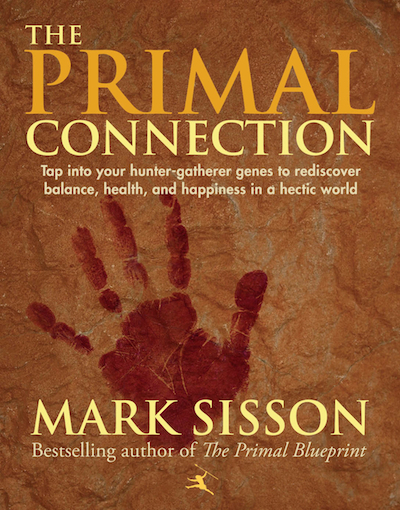
Are You Hyperconnected … and Disconnected?
The hectic pace of modern life distracts us from a painful truth: we are disconnected. Disconnected from our DNA recipe, forged through the selection pressure of human evolution, to enjoy health, happiness, and peace of mind. Horns, office chatter, and whirring machines batter our ears with incessant noise. Artificial light and digital stimulation overstress our nervous systems day and night. Traffic jams, long lines, interruptions, distractions, and big egos pervade daily life in such a manner that we don’t even realize the piece—or rather the peace—that’s gone missing.
In The Primal Connection, Mark Sisson, the leading voice in the Evolutionary Health movement, and bestselling author of The Primal Blueprint, expands on the premise that each of us is born with the genetic blueprint for a fit, lean, healthy, and productive life, presenting a series of guidelines to trigger the feel-good hormones your hunter-gatherer genes are hardwired to expect. As you make the mind-body connections, you will redefine your core values, discover your own pace, and make time for play, adventure, quiet reflection, friends and family, and optimal rest and rejuvenation.
Time To Get Primal!
Go barefoot—cures foot and back pain
Play in the dirt—boosts mood and immune function
Wear sunglasses at night—promotes sound sleep
Family before Facebook—strengthens your inner circle
Commune with nature—relieves stress at the biochemical level
Power down when you should—learn to single-task
Cultivate an attitude of gratitude—appreciate simple gifts, roll with punches
Redefine wealth—includes free time, fun, and fitness, too
Don’t Miss It! Receive an Email Alert When The Primal Connection is Released by Subscribing to the Mark’s Daily Apple Newsletter

Contest: Title Twisters
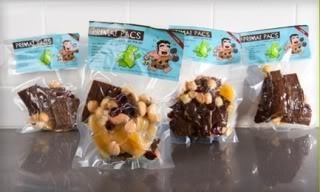
The Prize:
Organic, grass-fed, grass-finished beef jerky, dried mango, roasted and salted macadamia nuts, marcona almonds and dried cranberries, all conveniently vacuum-sealed into perfect serving sizes and delivered directly to your front door? Umm… yes please! And don’t forget Primal Pacs have no preservatives, grains or gluten, so they’re perfectly Primal.
The lucky winner of today’s contest gets 25 Large Primal Pacs. Retail value: $160.
Bonus: Use promo code “mda” for free shipping. Good for only two days.
And all you have to do for a chance to win is…
The Contest:
Have a topic, subject, or good idea for a blog post on MDA? Now’s your chance to suggest it. In the comments section below, leave a title for a future post on Mark’s Daily Apple.
That’s pretty much it. Tell me what you’d like to see covered on MDA with just the article title, and do it with as much creativity and cleverness as you can.
Each title submitted counts as one contest entry. Five entries per person are allowed.
Eligibility:
Any U.S. resident. Sorry worldwide readers. Most countries prohibit import of meat products.
The Contest End Time:
September 23, midnight, PDT.
How the Winner Will Be Determined:
I’ll pick a winner and will use submissions for future MDA article ideas.
To track all the contests visit the 2012 Primal Blueprint 21-Day Challenge Contest Page for daily updates.
Subscribe to the Mark’s Daily Apple Newsletter for Free eBooks, Weekly Challenge Updates and More!

September 19, 2012
Action Item #4: Exercise Primally – Move, Lift, and Sprint!
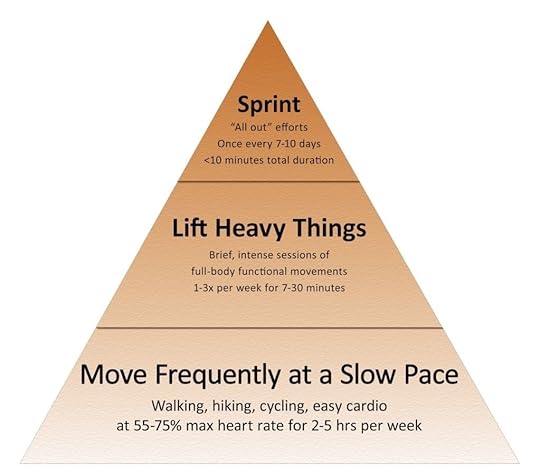 For as much as I emphasize the importance of food with regards to health and body composition and deemphasize the purely mechanical act of burning calories through arduous, protracted exercise, you still do have to move. You have to lift heavy things. You have to move very quickly every once in awhile. You have to stay active. These behaviors are absolutely essential to your Primal foray. So, let’s dig into Primal exercise, shall we? Enough food talk.
For as much as I emphasize the importance of food with regards to health and body composition and deemphasize the purely mechanical act of burning calories through arduous, protracted exercise, you still do have to move. You have to lift heavy things. You have to move very quickly every once in awhile. You have to stay active. These behaviors are absolutely essential to your Primal foray. So, let’s dig into Primal exercise, shall we? Enough food talk.
First off, if you haven’t downloaded a copy of Primal Blueprint Fitness, my free e-book that lays all this stuff out, go sign up for the newsletter to gain access. It’s free and you get tons of other cool freebies, so there’s really no reason not to do it. Plus, it’ll flesh out everything discussed in today’s post. Second, click on the pyramid to the right to zoom in. And we’re off…
Move (Frequently at a Slow Pace)
Moving frequently (at a slow pace) is the foundation of Primal fitness. It’s what we are meant to do most often, and what we should be able to do – walk around our environment for long periods of time without tiring or complaining about sore joints or needing to stop every few minutes to rest. Regular movement keeps us moving. And yeah, it “burns calories,” but the main reason to move slowly and frequently is to stay mobile, healthy, and alert long into old age. Just check out some of the benefits and health effects associated with walking:
Kids who walk to school are fitter than peers who do not.
Older healthy adults who walk briskly live longer than those who don’t.
Healthy adult males who engage in short bouts of brisk walking experience lower resting blood pressure and postprandial triglycerides.
Regular walking improves working memory in older adults.
Walking improves longevity in women over 70 years of age.
Walking programs improve cognitive ability in people with Alzheimer’s.
Take an early morning stroll. Before you eat breakfast, before you have coffee (okay, maybe not before the coffee), before you head off to work, just take a short walk for as long as you can spare. Got five minutes? Do a short five minute walk around the block. Got twenty? Do twenty.
Take brief breaks from work. Not only will this add several hundred steps to your total throughout the day, it will also clear your head and get your creative/diligent juices flowing anew.
Avoid elevators, take the stairs. Oh, and try something you’ve been wanting to do since you were a kid (don’t lie): go the wrong way on an escalator. It’s like a free treadmill!
Get a dog (or walk the one you’ve got). If you’ve got the time and energy that a dog deserves, get one. It will probably enrich your life in many ways, not just by goading you into regular walks. Extra points if you feed a species-appropriate diet.
Walk before you get home. After pulling in the driveway, take ten minutes to walk around the block a few times before you go inside. Because you know you’re gonna head straight for the couch otherwise.
Take an after-dinner stroll. The after-dinner stroll is customary in many cultures, and for good reason: it helps lower the glycemic response to a meal.
Grand weekend outing. Go for a long bike ride or hike. Spend about two to three hours in constant, slow movement.
And whenever it’s applicable, drag your entire family along.
Mini-challenge: Shoot for 10,000 steps a day. The average American gets just 5,000, which qualifies as “sedentary.” Don’t be sedentary. It feels bad to be out of breath after a couple blocks or a flight of stairs, and it’s really easy to avoid that. Still, 10,000 steps seems like a lot. Why, that’s nearly five miles!
Move (Less Frequently at a Slightly Faster Pace)
Sometimes it’s good to elevate your heart rate. I don’t think elevated heart rates should be sustained for very long, but staying between 55 and 75 percent of your max heart rate will keep you burning fat for energy while avoiding any serious burn-out, Chronic Cardio symptoms.
In lieu of actually taking a strenuous maximum heart rate test, you can simply use a fairly accurate formula: 208 minus (0.7 times your age). So, if you’re forty, your estimated maximum heart rate would be 180 beats per minute, and your upper limit for aerobic activity would be 75 percent of 180, or 135 beats per minute.
To monitor your heart rate, you have a few options.
You could buy a wireless heart rate monitor, which generally start at around $50-60. Polar is the leading brand.
You could use a smartphone app, like the iPhone’s Cardiio, which uses the phone camera to monitor your heart rate.
You could place your finger against the carotid artery on the side of your neck (where it’s the easiest place to find a pulse), count the beats for ten seconds (using a watch), and multiply the number by six to get beats per minute. This is how I do it.
Once or twice a week, spend some time at the upper range of your aerobic limit. Stay there as long as you can without exceeding your target rate. Try stuff like:
Brisk walking
Uphill hiking
Rucking (wearing heavy packs while walking or hiking)
Cycling (mobile or stationary)
Jogging (if you’re fit enough to stay under 75 percent of your max heart rate)
Swimming
Rowing
Stand-up paddling (my favorite)
When you’re done with one of these sessions, you should feel energized, refreshed, renewed. You shouldn’t feel too wiped out, and if you find yourself nursing an intense sugar craving, you probably left the fat-burning state and drifted into sugar-burning. That’s okay; just use this new experience to keep yourself out of that zone next time.
Mini-challenge: Get to the point where you can jog for fifteen minutes without exceeding 75 percent of your max heart rate.
Lift
Any effective total body fitness program has to include strength training, or else it’s neither effective nor total body fitness. You can run marathons and bike mountains, but if you can’t do a few sets of pullups and pushups or help out when your buddies need to move furniture, can you truly call yourself fit? I don’t think so, which is why I (having come from an endurance athletic background) always emphasize the importance of lifting heavy things. Strength training isn’t just about developing the physical ability to manipulate heavy objects in space and time; it’s also about building stronger bones and more resistant joints, developing more lean mass, living longer and better, staying healthy into old age, improving insulin sensitivity, and building up organ mass (or, as I like to say, insurance against disease).
Contrary to popular belief, strength training does not require heavy weights and expensive machines. That’s certainly one way for people to get an effective workout, but you can get quite strong and fit using just compound bodyweight movements. And even if you want more, you can always add weights later.
The Primal Essential Movements are as follows:
Pushups
From a plank position (straight, rigid line from feet to head), hands flat on the ground and shoulder width apart, arms extended, fingers pointed forward, lower your body until your chest (or nose) touches the ground. Keep your core and glutes tight and a neutral spine and neck.
Simplified Progression (consecutive reps needed to progress)
1. Knee pushups (male, 50; female, 30)
2. Incline pushups (male, 50; female, 25)
Movement Mastery – male, 50 pushups; female, 20 pushups
Pullups
Keep your elbows tight, tuck your chin (try to make a double chin), retract your shoulder blades (to protect your shoulders). Without flailing or using your lower body, lead with your chest and pull your body up using an overhand grip until your chin passes the bar. When lowering, never fully protract your shoulder blades. Don’t lead with your chin; keep it tucked throughout.
Simplified Progression
1. Chair-assisted pullups (male, 20; female, 15)
2. Chin-up (inverted grip) (male, 7; female, 4)
Movement Mastery – male, 12 pullups; female, 5 pullups
Squats
With feet at or around shoulder width (whatever’s most natural) and toes either forward or pointing slightly outward, lower by pushing your butt back and out until your thighs reach at least parallel. Keep the weight on the heels and a tight, neutral spine throughout the movement.
Simplified Progression
Assisted squat (using a pole or other support object while lowering into squat) (male and female, 50)
Movement Mastery – male and female, 50 full squats
Planks
Your body is a plank, as the name suggests. You are a single cohesive unbroken body, a straight line from head to foot. Elbows/forearms and toes are your only points of contact with the ground.
Simplified Progression
1. Forearm/knee planks (male and female, two minutes)
2. Hand/feet planks (male and female, two minutes)
Movement Mastery – male and female, two minutes
For more details and videos on these movements, check out their pages on MDA: squat, pullup, pushup, plank.
Twice a week, warmup, get your body and joints warm with some light “cardio,” and engage in a total body workout using the Essential Movements. Your goal should be mastery of all four movements for three sets. Once you’ve exhausted your mastery and want more, then add some weight (weight vest, kettlebell, sandbag, barbell, etc). Otherwise, maintaining movement mastery or bumping up the rep counts will keep you fit, lean, and strong.
For more variety, check out our Workout of the Week archives, which contain all sorts of workouts that incorporate these movements and more.
Mini-challenge: Achieve Essential Movement mastery for at least one Primal movement.
Sprint
Ah, sprints: the forgotten movement. Nobody sprints anymore, unfortunately, but we’ve all done it before. Check out how a kid gets from here to there – he sprints! Remember those days?
It turns out that those kids know something we do not. Sprints stimulate the production of testosterone (important for libido and muscle building). They increase the secretion of growth hormone (crucial for fat-burning). They improve insulin sensitivity and increase endurance and develop fast-twitch muscle fibers (the muscle fibers that look impressive and allow us to make powerful, quick movements). Okay, so maybe that nine year old sprinting around the house just for the heck of it isn’t thinking about all those health benefits, but we certainly can.
Before you head out to the track with visions of Usain Bolt dancing in your head, give an honest assessment of your abilities. When’s the last time you sprinted – truly gave an all-out effort on the track, pavement, or path? If it’s been awhile, or if you have some doubts about your abilities, it’s best to take it easy. Launching into sprints full bore can easily lead to pulled muscles or strained ligaments, and you don’t want that to happen.
A few sprint tips and tricks:
Uphill sprints are remarkably easy on the joints, since your feet aren’t traveling quite as far and the impact is lessened. They’re also a killer workout, which makes hill sprints my favorite sprint alternative for everyone (even people who can handle flat sprints).
I like beach sprints, but you have to live near a beach to do those regularly. The sand sure does feel nice, though.
Running on grass is a nice compromise, especially without shoes. I wonder if Walt Whitman ever experienced his blades of grass like that.
Running on a true, rubberized track is far easier on the joints than running on pavement. Just be sure to wear shoes. One of the Worker Bees tore off inches of hard-earned foot pad running barefoot sprints on a legit rubber track. Don’t let that happen to you.
Tabata sprints are real killers.
Sprints don’t even have to be on foot. You can cycle, swim, crawl, climb, or hit the stair stepper. As long as you’re giving a maximal effort, you are sprinting. It’s not about speed; it’s about effort. Try to go as fast as you can and it doesn’t matter how fast you go.
Let’s dig way back into the archives for this little gem from the early days of MDA:
Mini-challenge: Try mini sprints. Instead of sprinting for ten to fifteen seconds at a time, sprint for four to five seconds at a time – 40-yard dash territory. These aren’t quite as physically daunting, and you recover much faster. Bonus points if you do it uphill.
Play
It all comes back to play, of course. I train so that I can play, so that I can enjoy my life and my family and do things that I truly enjoy doing. I train so that I can keep up with the younger guys at Ultimate Frisbee. So that I can beat the younger guys. And more than anything, I train so that I can play and not get injured. I train so that I can keep on playing, keep on living.
If you’re going to go through all the trouble of walking, hitting that fat-burning aerobic zone, lifting heavy things, running hills, and everything else, you better have something to show for it, and I don’t mean a six pack or big biceps. I mean a good, long, enjoyable life full of experiences that you can look back on – and forward to – and smile. That’s play.
Mini-challenge: Assemble a group of friends and play some old school yard game – dodgeball, tag (freeze or standard), capture the flag, kickball, etc. Try to make a habit of it, too.
Subscribe to the Mark’s Daily Apple Newsletter for Free eBooks, Weekly Challenge Updates and More!

Contest: What Do You Want from Upcoming Book, Primal Woman?
The Prize:
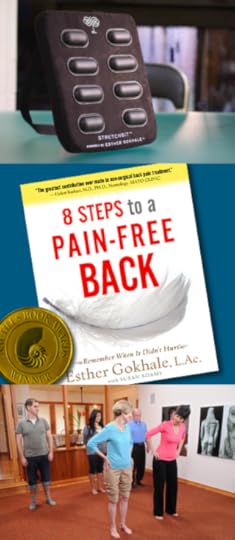
The ULTIMATE posture correction package courtesy of Esther Gokhale, owner and founder of the Gokhale Method Institute!
Do you suffer from mild to chronic back pain, inhibiting your sleep and daily life? Have you succumbed to the fact that this is “just how it is?” Not so fast… The Gokhale Method is a systematic, non-surgical process of restoring pain-free posture and movement based on the way our bodies were naturally designed. Learn how to sit, sleep, stand, walk and bend in ways that actually protect and strengthen your bones and muscles.
The lucky recipient of today’s challenge will receive:
Stretchsit® Cushion: Unlike a lumbar support cushion, Stretchsit elongates rather than compresses your low back, giving you the natural, healthy spinal shape shared by children, athletes and people in traditional societies the world over. This mobile, adjustable cushion can be easily moved from the car to the office, so you can enjoy the benefits throughout the day.
8 Steps to a Pain-Free Back: A step-by-step guide designed to help those suffering from back pain re-educate their bodies and regain the posture for which our bodies evolved.
DVD – Back Pain: The Primal Posture Solution: Follow along with Esther for 60 minutes of guided posture corrections and techniques as she addresses the root cause of most muscle and joint pain with healthy posture and movement techniques.
A hands-on Gokhale Method Consultation: A comprehensive evaluation of your current posture and how it relates to problems you may be having, a projection of what structural changes are possible, and some key ideas and practices to help you improve your structure immediately and long-term. This can be scheduled at one of the many Gokhale Facilities across the country and abroad. Or if that’s not available to you, you can even meet with a qualified teacher via Skype! Isn’t technology great?
Do you already have good posture and find yourself fighting the urge to adjust strangers on the elevator? You can train with the best and become a Gokhale Method teacher yourself! Click here for details about the program.
The Contest:
I’m pleased to announce that my wife Carrie – who many of your have met in-person at PrimalCon, or know through her past blog posts (Dear Carrie: Reader Question Roundup, Dear Carrie: Cellulite) – is writing a book due out at the end of next year tentatively titled “Primal Woman”. It will be her perspective on what it means to be a Primal woman in the modern world: her role as a woman, as a mother, a wife, an object of beauty, and a functioning member of society. She’ll likely be touching on a wide range of topics like body image, aging gracefully, handling relationships, raising a family, making a contribution beyond family, and health-related topics like menopause, PCOS, hormone replacement therapy, and the Primal Blueprint eating and exercise strategy for women to name just a few.
For this contest, Carrie wants to hear from you. In the comment board below, list your top 5 women’s health issues, topics, or questions you’d like to see addressed in Primal Woman, for a chance to win the prize above.
While the general scope of this book is outlined, this is your chance to impact its direction. Let her know what you want out of a book written by a Primal woman, for Primal women.
Eligibility:
U.S. residents only. All sexes welcome. You don’t have to be a woman to care about women’s issues.
The Contest End Time:
September 23, midnight, PDT.
How the Winner Will Be Determined:
A winner will be selected at random.
To track all the contests visit the 2012 Primal Blueprint 21-Day Challenge Contest Page for daily updates.
Subscribe to the Mark’s Daily Apple Newsletter for Free eBooks, Weekly Challenge Updates and More!

September 18, 2012
Action Item #3: Make the Healthiest Choices Across the Spectrum
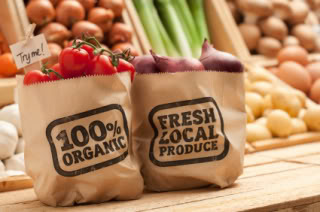 Most of us aren’t hunters. Most of us can’t take days off from work to gather some edible bulbs and silently stalk a wild beast whose pursuit might not even end in a kill and meal. No, we are modern humans who go to work, who wield income rather than spears, who mosey on down to the grocery store when we need food. We have the luxury – and some might say burden – of choosing what we’ll eat and when we’ll eat it. But strangely enough, there was a sort of freedom in the way we obtained food in years gone past, wasn’t there? When we filled our bellies solely by what we could catch, grow, and gather, there wasn’t a whole lot of junk food sneaking onto our plates. No Twinkies, no double gallon jugs of soybean oil, no golden arches looming over you.
Most of us aren’t hunters. Most of us can’t take days off from work to gather some edible bulbs and silently stalk a wild beast whose pursuit might not even end in a kill and meal. No, we are modern humans who go to work, who wield income rather than spears, who mosey on down to the grocery store when we need food. We have the luxury – and some might say burden – of choosing what we’ll eat and when we’ll eat it. But strangely enough, there was a sort of freedom in the way we obtained food in years gone past, wasn’t there? When we filled our bellies solely by what we could catch, grow, and gather, there wasn’t a whole lot of junk food sneaking onto our plates. No Twinkies, no double gallon jugs of soybean oil, no golden arches looming over you.
And so now we’re tasked with making healthy choices, whereas before healthy choices were all that existed. It’s great to have the freedom to choose, but we should try to make the right choices.
How do we do it? We make the healthiest choices across the spectrum of foods as dictated by circumstance, access, and finances. Let’s see how they rank, with 1 being “healthiest.” Start with the foods with the first spot and buy those when and if you can.
Red Meat (Beef, Lamb, Pork)
Red meat, along with seafood (and derivative fats), will likely provide the lion’s share of your calories. It’s probably best that you get the best stuff possible.
1. Grass-fed/grass-finished/pastured (pork) – Before organic and before local comes grass-fed and finished. While I try to buy beef from local providers – and usually end up doing just that – I’m most concerned that the beef I eat comes from animals raised strictly on grass. Even a few weeks of grain feeding can alter the nutritional content and fatty acid composition of the resultant meat, so grass-fed and finished is the absolute best. These needn’t be certified organic, but I’ve found that many grass-finished ranchers are organic in everything but name. You won’t find grass-fed pork, because pigs aren’t ruminants, but you can find pastured pork who are allowed to forage and often receive farm waste (milk, whey, fruits, vegetables). Note that “pastured” beef isn’t necessarily grass-fed and finished. Bones, organ meat, and tougher cuts like chuck and stew are less expensive – and arguably more nutritious – ways to incorporate truly grass-finished animals into your diet.
2. Organic – According to the USDA, organic beef must come from cows who were born and raised on organic pasture, must never receive antibiotics, must never receive growth-promoting hormones, must have unrestricted outdoor access, and must be fed only organic grasses and grains. So, yeah, grains. Note that there’s no mention of the breakdown between grains and grasses; it could be 80% grains and 20% grass and still qualify as organic. So, while organic is clearly preferable to conventional meat, it’s unlikely to be superior to grass-fed and finished meat without the organic label.
3. CAFO – Most meat you’ll come across in supermarkets and restaurants will be from Concentrated Animal Feeding Operations, where animals are treated like mere products and maximum productivity is prized above all – even if it means pumping the animals (and their meat) full of antibiotics, hormones, and pesticide-laden feed. The meat doesn’t taste as good, it’s less nutritious, and, at least in the case of pork, it’s extremely high in omega-6 fats.
Poultry and Eggs
For when you’re not eating ruminants. Dollar for dollar, truly pastured eggs might just be the best use of your money.
1. Pastured – A pastured chicken isn’t just free range, given a patch of dirt upon which to scratch and peck; a pastured chicken is given access to pasture, to grassland teeming with a smorgasbord of delicious insects, nutritious plants, and edible seeds. The best pastured poultry gets most of its calories from the pasture, with a few handfuls of chicken feed to round things out back at the henhouse. Since poultry (and every animal we eat) doesn’t create nutrients out of thin air, its nutritional content is determined by the nutritional content of its diet. A pastured chicken (or duck, or turkey, or any bird) tastes like a different animal altogether, probably because it’s living like its primary ancestor – the jungle fowl (PDF) – and its fatty acid composition bears that out (far less omega-6 than battery-raised birds). Same goes for eggs from the same birds.
2. Organic – Organic poultry gets outdoor access and organic feed. It receives no antibiotics, no drugs, and no hormones (although that’s true for all chickens, at least in the US). It does not get access to pasture, to bugs, or to edible grasses unless otherwise specified. It’s better than conventional poultry, but it’s eating corn and soy (albeit non-GMO, organic) just the same.
3. Free range – Doesn’t mean very much. It has access to the outside, but it’s just a dirt patch. All the food (which is just soy and corn, of course) is inside, so that’s where it’ll spend most of its time. At least it gets to walk around some, rather than being crammed in a cage.
4. CAFO – Avoid if you can, unless you like eating beakless, stationary, big-breasted birds with soybean and corn oil for fat.
Seafood
Seafood and the omega-3 fats, sea minerals like iodine, and other micronutrients it provides are essential. Even if you think you “hate seafood,” check out the lists below and I’m sure you’ll be able to find something you can enjoy.
1. Shellfish, farmed/wild; oily fish, wild; coho, farmed – Wild-caught sardines, salmon, tuna, anchovies, mackerel, and herring have the highest levels of omega-3 and, except for salmon and tuna, they’re some of the most affordable fish around. Farmed shellfish are raised essentially like wild shellfish, attached to a fixed object and allowed to obtain sustenance from the ocean; they’re also the most nutrient-dense of the edible sea creatures. And although most farmed salmon is nutritionally inferior to wild, farmed coho salmon is actually quite reminiscent of wild coho.
2. Canned oily fish and shellfish - Canned sardines, salmon, light tuna, oysters, mussels, and other fish from the first category are budget-friendly ways to eat healthy seafood. Just stick to BPA-free versions, to avoid the endocrine disruption.
3. Domestic catfish, trout, barramundi, tilapia, crayfish; non-oily wild fish – While trying to farm wholly carnivorous fish is problematic and usually ends up producing an inferior food, replicating the diet of herbivorous fish is easier. In short, everything listed here is fair game, whether wild or farmed, especially if it’s domestic. Neither they nor the non-oily wild fish like cod are particularly high in omega-3s, but they’re all great sources of protein with decent levels of nutrients.
Vegetables and Fruits
Plants – both vegetables and fruits – form the basis of the Primal Blueprint way of eating. They don’t provide the bulk of calories by any means, but they provide volume and micronutrients. It’s important that you eat the most nutritious, less problematic types.
Growing Method
1. Local organic – The cream of the crop. Food from your neck of the woods grown with organic methods that doesn’t have to travel halfway across the country to reach you.
2. Local conventional – Less transit time means a more recent harvest date means more nutrition. Local ranks higher than anything grown remotely, even organic. Besides, many smaller producers like the ones you’ll run into at farmer’s markets use organic methods without the official stamp of approval from the government.
3. Organic remote – Produce grown without massive amounts of pesticides and herbicides applied tend to have higher levels of polyphenols, the plant’s natural methods of protecting against pests and other aggressors. Those same polyphenols are good for us, too.
4. Conventional remote with skin that’s inedible or easy to wash – If you’re going to eat conventional produce, you best try to stick to vegetables whose skins you peel, remove, or easily wash. Avocados, onions, asparagus – these are pretty safe, since you’re either not going to be eating the skin that’s come into contact with chemicals or you’ll be able to wash it effectively. For fruits, bananas, oranges, mangoes, pineapples, and kiwis are good.
5. Conventional remote with edible or hard to wash surfaces – Leafy greens, broccoli, bell peppers, and other vegetables whose surface area is eaten or too large to effectively wash should be eaten with caution or avoided altogether. Fruits with soft, edible skin, like apples, apricots, peaches, plums, pears, grapes, berries, and tomatoes are best avoided.
Vegetable Nutritional Value
1. Nutrient-dense – Beets, broccoli, Brussels sprouts, carrots, cauliflower, eggplant, garlic, ginger, jicama, kale, chard, romaine, onion, peas, bell peppers, spinach and yellow squash are some of the vegetables with the highest levels of antioxidants, vitamins, minerals, and other beneficial components (like soluble fiber) available. Base your meals and your shopping around these vegetables. Choose “heavy” vegetables, which in my entirely unscientific estimation, are more nutritious.
2. Less nutrient-dense – There’s nothing wrong with stuff like cucumbers, butter lettuce, or iceberg lettuce, but I wouldn’t spend a lot of money on them when there’s so many more intriguing and beneficial options available.
Fruit Nutritional Value
1. Good antioxidant levels, low sugar – All berries, cherries, prunes, peaches, apricots.
2. Good antioxidant levels, moderate sugar – Bananas, apples, figs, grapefruit, kiwi, pears, pomegranates.
3. Good antioxidant levels, high sugar – Pineapple, grapes, mangoes, melons, nectarines, oranges, papayas, plums, tangerines.
Nuts
Although all nuts are highly nutritious, they are calorically dense, and many of them are high in omega-6 fats. When you’re talking about a whole food high in vitamin E and magnesium like an almond or a hazelnut, a little omega-6 isn’t anything to worry about. But when those occasional handfuls of nuts become regular, constant occurrences whose caloric content begins to approximate that of entire meals, the omega-6 fats add up.
1. Low omega-6 content – Macadamia nuts reign supreme on this account.
2. Moderate omega-6 content – Almonds, pistachios, cashews, hazelnuts.
3. High omega-6 content – Walnuts and pecans.
Supplemental Carbs
These are exactly that – supplements with which to address a deficiency. If you’re a hard-charging athlete who trains daily, then you might need some supplementary glucose to function best. If you’re not, though, you may not need these supplements on a regular basis.
1. Tubers and other starchy vegetables – Sweet potatoes of all kinds, potatoes of all kinds, and winter squash like butternut or acorn are all carb-dense and nutrient-dense, making them great sources of both supplemental carbs for athletic purposes and of minerals, vitamins, and phytonutrients.
2. Wild rice, quinoa – These pseudo-grains are gluten-free and relatively low in other plant toxins, especially if you soak and ferment them using traditional preparation methods. They’re fine ways to add more glucose to your diet.
Dairy
If you’re tolerant of it, dairy can be a fantastic source of fat, protein, and nutrition. Stick to grass-fed and finished, or at least pastured, dairy products for the superior nutrition (CLA, vitamin K2).
1. Raw, fermented, full-fat – Think kefir, yogurt, and skyr (although it’s low-fat, it’s traditionally served that way). Raw, fermented, full-fat dairy from a trusted, pastured supplier makes for the most nutritious, best-tasting, least-problematic choice. Fermentation takes care of most of the lactose, thus eliminating a potential agent of intolerance, while providing added probiotic benefits.
2. Raw, full-fat – Think butter, cream, whole milk. Raw dairy is more nutritious, it’s fats less damaged, and the full fat content is necessary for proper absorption and presence of fat-soluble vitamins like vitamins A and K2. Plus, full-fat dairy contains the most CLA.
3. Organic, non-homogenized, full-fat – Sure, it’s pasteurized, but at least the fat globules haven’t been damaged after undergoing high pressure homogenization treatment. The fat-solubles will be mostly intact.
Well, that should get you started for your next shopping trip. Be sure to revisit Action Item #1, where I detailed what not to buy, plus Action Item #2, where I explained how to shop and what fats and kitchen staples to buy, then let me know if you have any further questions on food choices in the comments. Take care and Grok on!
Subscribe to the Mark’s Daily Apple Newsletter for Free eBooks, Weekly Challenge Updates and More!

Contest: What Does It Mean to Be a Primal Family?
The Prize:
Something for the whole family…

A Kangaroo - Not a living, jumping, boxing, marsupial. This kangaroo is the solution for people who want to stand at work. Made by Ergo Desktop, the Kangaroo is an adjustable height desk unit that sits atop your boring sit-down desk. There’s really nothing else on the market like it. These are handmade in Ohio and shipped entirely assembled. Ergo Desktop has various models and finishes to match your office and the size of your computer. Winner will receive a choice of the Kangaroo Pro, the Kangaroo, or the Wallaby. Perfect for folks who work eight hours a day and don’t won’t to sit themselves into back problems later in life. These are also a good option if your workplace is permanently affixed with desks of the sitting variety. You know I’m a big proponent of standing at work. This is your chance to win a standing workstation. Retail value: Up to $499.
 Squatty Potty – You think Grok took a seat on a porcelain throne when nature called? Of course not! Grok squatted, and so should you. But what are we to do? Is it time for all-out bathroom renovations? No, there’s a simpler solution, and that’s where Squatty Potty comes to the rescue. The winner of this contest gets their pick of the Squatty Plastic, Squatty Classic or the Squatty Tao Bamboo. Learn more about the benefits of squatting here and order your own Squatty Potty today. Retail value: Up to $79.95.
Squatty Potty – You think Grok took a seat on a porcelain throne when nature called? Of course not! Grok squatted, and so should you. But what are we to do? Is it time for all-out bathroom renovations? No, there’s a simpler solution, and that’s where Squatty Potty comes to the rescue. The winner of this contest gets their pick of the Squatty Plastic, Squatty Classic or the Squatty Tao Bamboo. Learn more about the benefits of squatting here and order your own Squatty Potty today. Retail value: Up to $79.95.

Ethereal Confections – You may remember Ethereal Confections from the Primal Blueprint Real Life Story: A Triple Threat Success Story with Chocolate on Top. Ethereal is owned by 3 people: a sister, her brother and his wife. All three are paleo and have been for going on 3 years now. That’s why when they started their own business they decided to commit to being dairy free and gluten free. They also committed to only using dark chocolate to help keep the sugar levels in check. And, for their Akasha line and their hazelnut & almond nom noms, they only use soy free chocolate.
The lucky winner of this contest gets a 9-piece Truffle Box, 6 pieces of Hazelnut Nom Noms, 6 pieces of Almond Nom Noms, 6 Akasha bars (one of each), 2 Meltaway bars and 1 Macadamia Raspberry bar delivered directly to your front door. Retail value: $115.
MDA readers, use promo code “MDA10″ to get 10% off your order at Ethereal Confections through the end of September, 2012. And connect with Ethereal on Facebook.
The Contest:
Over the years, during these annual Challenges you’ve shared glimpses into your lives. You’ve shared pics of your Primal-stocked fridges, of your breakfasts, lunches, dinners and Primal dishes. You’ve shown your groceries (two years in a row) and your best Grok poses. You showed the world what it’s like to forage in a fast food nation. And don’t forget the time Grok was spotted far and wide. Let’s continue this tradition of showing Mark’s Daily Apple readers (particularly those new to this way of life) what it means to be Primal.
This year, I’m asking you to show the world what being a Primal family looks like.
All you have to do for today’s contest is email me a pic that captures some part of your Primal family life. Going on a hike this weekend? Take a snapshot of the entire fam on the trail and send it over. Cooking up a Primal feast tonight? Shoot a pic of your tribe around the dinner table and email it to me. Playing a game of Ultimate Frisbee? It’s time to pull out your phone cam. Just about anything goes for this one. Let’s show the world what a healthy, Primal family looks like. I’m talking barefoot pics, dancing pics and meat eating pics. Sun bathing, meditating, and playing. Bounding, leaping, laughing and socializing. Whatever it is, as long as it relates to the Primal lifestyle AND you and your family are in the photo your submission will qualify you to win the prizes above. For ideas, take a look at some of the photos from last year’s contest “What Does Primal Living Look Like?“, and add a family twist. Kudos (and the prize!) to the person that submits the photo that best epitomizes the Primal lifestyle (see “How a Winner Will Be Determined” below).
Use the email subject heading “Primal Family” when submitting your photo, so I can easily find and organize all submissions.
Eligibility:
Only U.S. residents. Fine chocolates don’t ship overseas particularly well.
The Contest End Time:
September 24, midnight, PDT.
How the Winner Will Be Determined:
The Worker Bees and I will pick the photo that we think best represents Primal family life.
Fine Print:
Submitted photos will be published on Mark’s Daily Apple during the week of reader-created content (Sep. 23-29).
MDA reserves the right to not publish submissions for any reason.
To track all the contests visit the 2012 Primal Blueprint 21-Day Challenge Contest Page for daily updates.
Subscribe to the Mark’s Daily Apple Newsletter for Free eBooks, Weekly Challenge Updates and More!

September 17, 2012
Action Item #2: Shop, Cook, and Dine Primally
 Now, the real changes begin. You’ve purged the SAD foods from your life, and now your fridge, freezer, and pantry are empty, your pans and pots are gleaming and ready, and the menus at your favorite restaurants appear off limits. You know what not to eat, and the Primal Blueprint Shopping List shows you what you should be eating, but what’s next? How do you apply your newfound knowledge? How and where should you shop? Once you’re well-stocked, how do you begin to cook Primally? What equipment do you use and where do you get the proper recipes? And when you’re eating out, how do you make good choices? What do you tell the waiters? How do you navigate the nutritional minefield that is the modern restaurant menu? If it seems overwhelming, it’s really not.
Now, the real changes begin. You’ve purged the SAD foods from your life, and now your fridge, freezer, and pantry are empty, your pans and pots are gleaming and ready, and the menus at your favorite restaurants appear off limits. You know what not to eat, and the Primal Blueprint Shopping List shows you what you should be eating, but what’s next? How do you apply your newfound knowledge? How and where should you shop? Once you’re well-stocked, how do you begin to cook Primally? What equipment do you use and where do you get the proper recipes? And when you’re eating out, how do you make good choices? What do you tell the waiters? How do you navigate the nutritional minefield that is the modern restaurant menu? If it seems overwhelming, it’s really not.
Here: let me show you.
Shopping
Since most of you will not be hunting and gathering your own food, you’ll be forced to do some shopping. Let’s explore where to shop and how to do it.
Where to Shop
First, go local. The closer you are to where your food is grown, raised, picked, caught, and/or slaughtered, the less time in transit it will take reaching you. Especially in the case of fruits and vegetables, with a few exceptions, nutritional content begins to wane as soon as it’s plucked from the plant or ground. Tomatoes shipped from Chile will taste worse and contain fewer nutrients than tomatoes grown ten miles from your city, every single time. Spinach leaves sitting in a big plastic tub in the deep dark confines of a Costco freezer for two weeks will be less nutritious than the mud-speckled spinach offered up by the gruff farmer from the next county over, no matter how crisp and green and triple-washed the Costco leaves appear. When it comes to food, time is nutrition.
In the case of animal products, staying local means you can look the guy or gal who raised the animal whose remains (or whose eggs or dairy) you’re going to be consuming in the eye and learn about the food you’re paying good money for. Were the pigs pastured? Were the cows grass-fed? Were the hazelnuts that the chickens ate grown locally? Plus, by giving money directly to the farmer, you’re taking the place of the Whole Foods or whatever other specialty grocer who’d subsequently jack up the price; you’re cutting out the middleman, or at least one of them, and saving some money in the process.
“Eating local” sounds hard, but with today’s bountiful, annual harvest of farmer’s markets, it’s getting easier and easier:
To find a farmer’s market (or wholesaler, CSA, farm, grocery/co-op, or meat processor) near you, the best directory appears to be Local Harvest. Simply type in your zip code and see what comes up. There’s also Eat Wild, a directory of farms willing to sell directly to the public. You could also use Yelp to search for “farmer’s markets” or “CSA”s in your area, or search for a Slow Food USA chapter near you (Slow Food International is also worth a look). And finally, I’ve happened across great “pastured eggs” and “raw goat milk” just by typing those terms into a Craigslist search. These were local-as-can-be farmers whose products weren’t available at farmer’s markets or anywhere else. They sold to and traded with their neighbors and turned to Craigslist after running a surplus. Since Craigslist doesn’t receive a fee or a cut of the profits, these are often even better deals than the farmer’s markets.
If there’s truly nothing local nearby, the grocery store will do. Whole Foods is the premier national chain of organic, whole foods (duh) grocery stores; check their list of stores to find one near you. Contrary to popular belief, Whole Foods does not have to be “Whole Paycheck,” so long as you stick to the perimeter of the stores – produce, meat, dairy, eggs, bulk bins – and avoid the inner aisles where most products are, admittedly, insanely overpriced. Trader Joe’s is another promising option whose presence is expanding across the United States. Traditional grocery stores, while unlikely to offer much in the way of pastured meat and local produce, are also fine choices with plenty of real Primal fare on hand; just stick to the perimeter as always.
Consider getting a membership to a big box store like Costco. More and more, I’m finding that Costco is catching on to the demands of a health conscious consumer base and offering organic produce, meat, and other Primal-friendly products. I’ve even heard tell of big tubs of extra virgin coconut oil showing up in select Costcos!
If brick and mortar stores just aren’t providing what you need, check out my list of Primal Resources for online retailers that ship anywhere and everywhere.
How to Shop
These are my tips for making your shopping trips bountiful and fruitful.
Once you’re at the grocery store/farmer’s market/CSA selection page/online order form, draw from the Primal Blueprint Shopping List when deciding what to get.
Get to know the meat/fish/egg guy. Whether it’s the lanky beanpole severing salmon heads and filleting halibut at the Whole Foods fish counter or the woman slinging grass-fed beef and pastured eggs at the far corner of the farmer’s market, if you develop a strong relationship with whomever represents a direct conduit to the untold delights of delicious animals, you will benefit. You’ll get deals, you’ll get specials, you’ll get your favorite cuts saved for you, you’ll get extras tossed in for free.
Embrace frozen meat, fish, vegetables, and fruit. Freezing food shortly after harvest actually preserves the nutrient content quite effectively, so it’s often the case that the frozen spinach is more nutritious than the “fresh” spinach that was picked last week.
Look for deals and stock up when they present themselves.
If it’s not a grain, legume, vegetable oil, or refined sugar-containing item, you’re essentially good to go. You’re really not limited on this way of eating, when you really think about the vast number of real food available to humans nowadays.
Meal Preparation
Cooking is easy, especially when you start with great ingredients. So, before you even begin to think about turning on that burner, get your workspace in order. My suggestions:
Ditch the non-stick cookware and get a good cast iron pan and some stainless steel cookware – pots, pans, skillets, and roasting pans.
Grab a crockpot (for easy meals you can start in the morning and forget about til you get home), a stockpot with a steamer addition (for making broth and steaming veggies), and a Dutch oven (for braising tougher cuts of meat).
Grab some glass snapware and ziploc bags for food storage and easy transport.
Consider a blender.
Consider a standalone freezer, which allows you to buy quality food in bulk and save it for later.
Assemble an arsenal of salts, peppers, spices, herbs, and other “supplementary foods” to provide culinary variety and health benefits: cumin, cinnamon, turmeric, cayenne, ginger, garlic, dill, rosemary, thyme, mint, lemon/lime, to name several.
Gather your cooking and salad fats. I recommend coconut oil, at least one type of animal fat (I like grass-fed butter or tallow), and a bottle of good extra virgin olive oil. Palm oil (from sustainable outfits that don’t murder orangutans; since it has no orangutans, Nigerian palm oil is said to be a better choice than Sumatran or Bornean palm oil, if you can find it) is another worthwhile one.
Get some good Primal cookbooks. This one guy has a couple decent ones that I’d definitely recommend, and you could always sign up for the free newsletter for free access to two user-created cookbooks.
Google “Primal recipes” for the dozens of recipe sites out there pumping out delicious food every week.
Pick five favorite staple recipes. Make them your go-to meals that you can whip up without much trouble, without thinking too hard, and without pulling out a lot of ingredients and kitchen implements. Rotate recipes in and out as you please, but always have a solid quintet at your behest.
Learn to cook a steak.
Learn to hard boil an egg (for softer yolks, drop the time with the lid on to 7 or 8 minutes).
Dining Out
I admit – this may be the trickiest part of going Primal. You’re at the mercy of what the establishment deigns to offer. You have to hope the server or cashier understands the difference between “real butter” and “butter-flavored soybean oil shmear.” You’ve gotta count on the head chef actually listening to and honoring your requests. You have to be prepared to possibly pay a little extra to get what you really want. But it can be done. And in time, you’ll become truly adept at making it out of almost any restaurant without a stomachache.
First, you have to realize that some places are simply not going to work out very well. The hot wing spot, the Chinese buffet, the pizza joint – these are not easy places to find Primal food. Prepare yourself to eat a lot of salads.
But this just means you’ll have to branch out and try new types of food. Greek, Persian, Vietnamese, Thai, Indian, soul, Korean, Japanese, Mexican, Brazilian, Caribbean, and dozens of other cuisines await you.
My favorite strategies for assuring the food I eat is Primal-friendly, wherever I am:
Stick to “grilled” and “steamed” over “sauteed” or “stir-fried.” Grilled usually refers to open flame and little else and steamed tends to mean just heated water vapor, while the other terms generally involve the use of copious amounts of vegetable oil.
Build your meals around protein and vegetables.
Ask that your food be cooked in “real butter” or olive oil. You have to say “real butter,” because oftentimes what passes for butter is a butter-flavored abomination. I’ve been in breakfast joints where they had “no real butter on the premises.” Madness, I know.
Get your burger “protein style,” or wrapped in lettuce, or atop a garden salad. More and more places are catching on, so this likely won’t be an outlandish request.
Go for lamb when possible. It’s the most likely meat to be grass-fed in your standard restaurants, doubly so if they use New Zealand lamb, which is always grass-fed.
Be firm and resolute when asking for modifications or making special requests. Sure, the waiter at the Vietnamese pho place might not quite understand why you don’t want the noodles in your bowl of broth and beef parts, but that’s okay. Don’t feel weird or like you’re imposing; after all, you’re paying them!
This may seem like a lot to take in all at once. When you think about it, though, you don’t have to do all this right away. You can keep referring back to this post as you make your way along the Primal path, buying a crockpot here, a spice there, and trying a dining out strategy one at a time. Just realize that even if you don’t immediately enact all these changes right away (which is frankly impossible or improbable for most), any changes you do make will be positive ones that get you that much closer to where you’re going. Most of all, I just want you to know that you’re not alone and this really is possible.
Thanks for reading, folks, and be sure to chime in with your successful strategies for shopping, cooking, and dining out. Hope your challenge is going well!
Subscribe to the Mark’s Daily Apple Newsletter for Free eBooks, Weekly Challenge Updates and More!

Mark Sisson's Blog
- Mark Sisson's profile
- 199 followers


